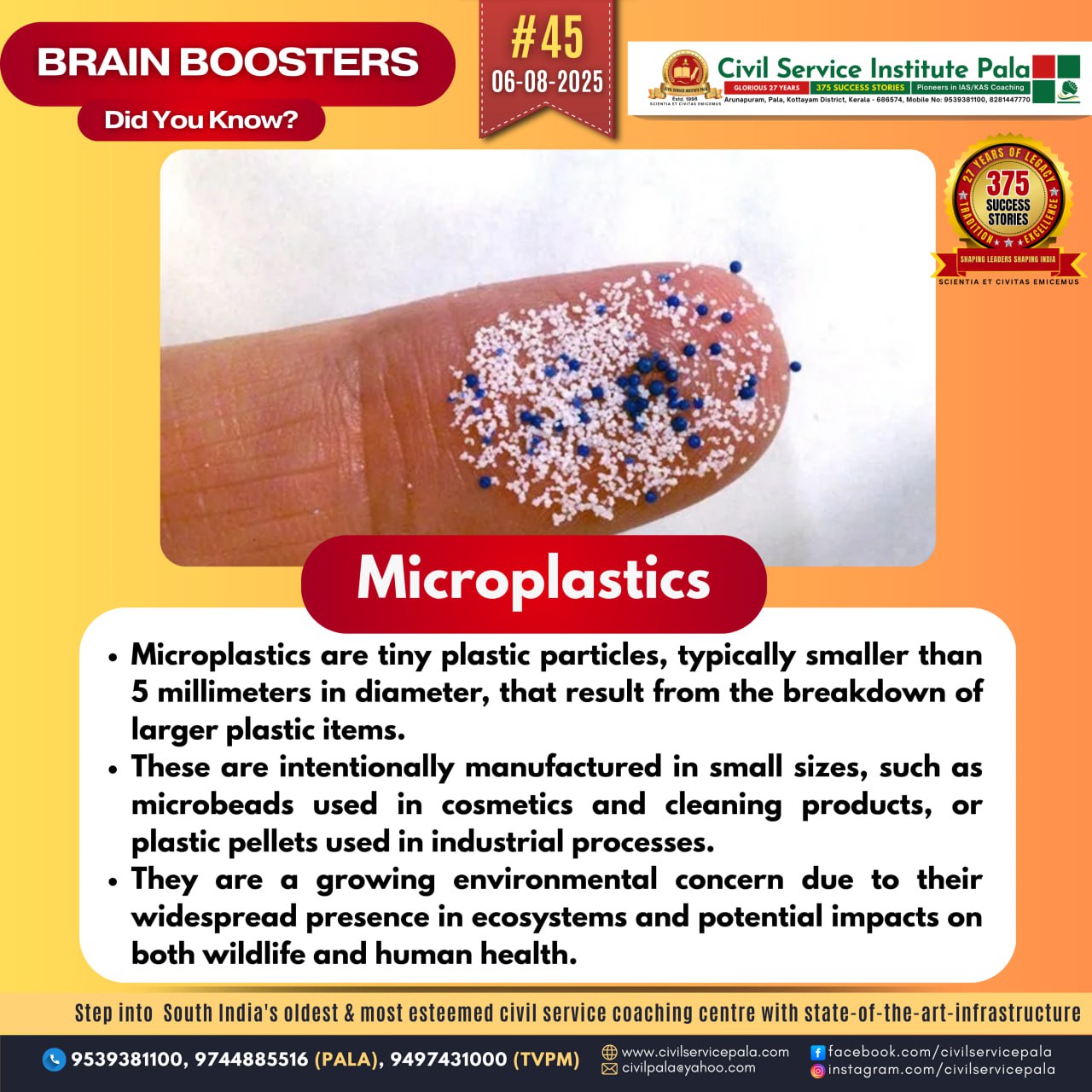
Microplastics
Microplastics have emerged as one of the most pervasive and concerning environmental pollutants in the 21st century. These tiny plastic particles, typically less than 5 millimeters in size, originate from the breakdown of larger plastic waste or are manufactured intentionally for use in products like cosmetics and industrial cleaners. While small in size, their impact on ecosystems, human health, and the global environment is profound and increasingly alarming.
Microplastics are broadly categorized into two types: primary and secondary. Primary microplastics are deliberately manufactured in small sizes and are found in products such as facial scrubs, toothpaste, and plastic pellets used in manufacturing. Secondary microplastics, on the other hand, result from the degradation of larger plastic items such as bottles, bags, and fishing nets due to exposure to sunlight, wind, and water over time. Both types eventually find their way into oceans, rivers, and soils, contributing to widespread pollution.
One of the most significant concerns surrounding microplastics is their impact on marine environments. Microplastics are ingested by marine organisms, from tiny plankton to large fish and whales, leading to physical harm, toxic exposure, and even death. These plastics can also accumulate in the food chain, ultimately reaching humans who consume seafood. Studies have shown that microplastics are present in salt, bottled water, and even the air we breathe, raising concerns about their long-term effects on human health. Although research is still ongoing, potential risks include inflammation, hormonal disruption, and other health issues.
The widespread use of plastic and improper waste management practices are major contributors to microplastic pollution. Despite global awareness campaigns and legislative efforts to curb plastic use, the production and disposal of plastic continue to rise. Measures such as banning microbeads in personal care products, promoting recycling, and encouraging the use of biodegradable materials are steps in the right direction. However, these actions must be strengthened through international cooperation, improved waste management infrastructure, and public education.Source:https://www.bbc.com/future/article/20250723-how-do-the-microplastics-in-our-bodies-affect-our-health



